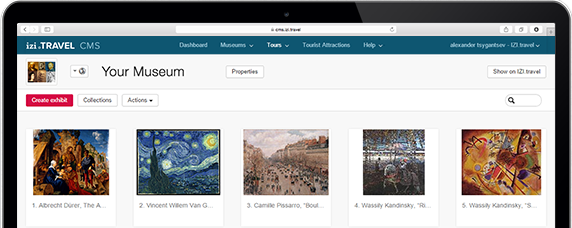Hieronymus Bosch «The Haywain Triptych» 1501-1502, Prado, Madrid
The Haywain Triptych is a panel painting by Hieronymus Bosch, currently housed in the Prado Museum, in Madrid. A date of around 1516 has been established by means of dendrochronological research. The central panel, measures 135 by 200 centimeters and the wings measure 147 x 66 cm.
The painting was part of a group of six acquired by king Philip II of Spain in 1570, and shipped to El Escorial four years later. It was later sold to the Marquis of Salamanca, and divided into three paintings. In 1848, the central panel was bought by Isabella II of Spain and brought to Aranjuez, the right one was returned to Escorial and the left went to the Prado. The triptych was finally recomposed in 1914 in the latter museum.
The exterior of the shutters, like most contemporary Netherlandish triptychs, were also painted, although in this case Bosch used full colors instead of the usual grisaille. When closed, they form a single scene depicting a wayfarer. Around him is a series of miniatures including the robbery of another wayfarer and a hanged man. According to the most recent interpretations, this figure may represent the man who follows his road in spite of the temptation of sins and the evil acts occurring around him.
The left panel shows God giving form to Eve. Unlike the Garden, though, a narrative sequence flows through the panel in different scenes. At the top, the rebel angels are cast out of Heaven while God sits enthroned, the angels turning into insects as they break through the clouds. Below this, God creates Eve from the rib of Adam. Next, Adam and Eve find the serpent and the tree; the serpent offers them an apple. Finally, at the lowest part of the panel, the angel forces the two out of the Garden of Eden. Adam speaks with the angel; Eve, in a melancholic pose, looks ahead to the right.
In the center panel Bosch shows Christ in the sky, not paralleled in the Garden. An angel on top of the wagon looks to the sky, praying, but none of the other figures see Christ looking down on the world. The rightward bow of the figures around the wagon provides the force for the viewer’s eye to move with them on their journey and the cart is drawn by infernal beings which drag everyone to Hell, depicted on the right panel.
The forward kinetic motion of the participants moves the viewer from present-day sin into unadulterated torture in the realms of Hell. The procession on the left side of this panel bends back into the middle ground, but the right side figures continue in a straight line with the wagon, a more evident progress into damnation.
Image: Hieronymus Bosch «The Haywain Triptych» is licensed under Public Domain
References:
Bax, Dirk. Ontcijfering van Jeroen Bosch. Den Haag, 1949
Fischer, Stefan. "Hieronymus Bosch. The Complete Works", Cologne 2013.
Gibson, Walter. Hieronymus Bosch. New York: Thames and Hudson, 1973. ISBN 0-500-20134-X
Download de gratis izi.TRAVEL app
Maak eigen audiogidsen!
Het gebruik van het systeem en de app is gratis


